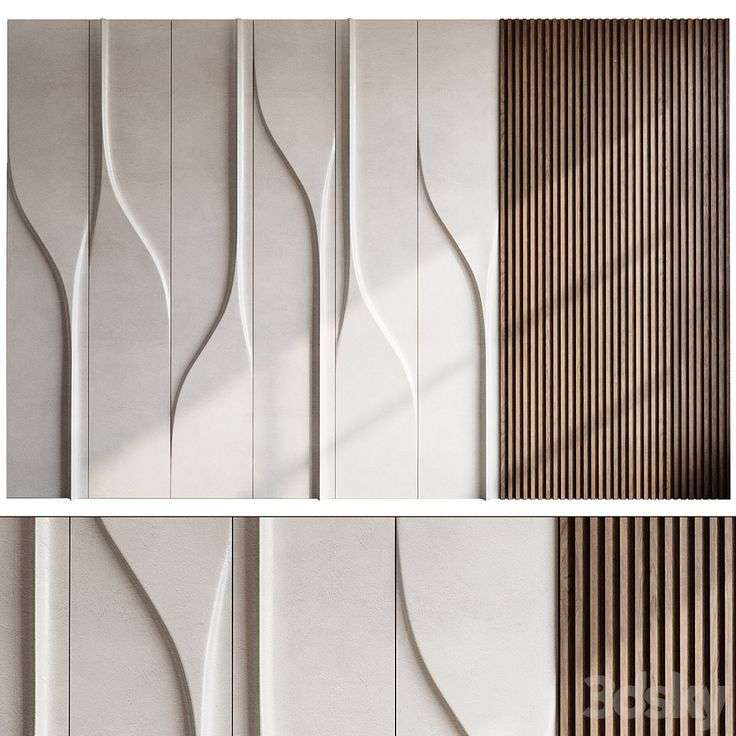Monochromatic interiors, where a single color or hue is used throughout a space, are often associated with sophistication, simplicity, and elegance. By focusing on one color family, monochromatic design offers a serene and cohesive aesthetic that can elevate any room. Whether you prefer neutral tones or bold shades, a monochromatic scheme can create a timeless, balanced, and harmonious atmosphere.
In this post, we’ll explore how to successfully design monochromatic interiors, achieving both cohesion and elegance, no matter your style or preference.

1. Understanding the Power of Color
Color plays a fundamental role in interior design, setting the mood and tone of a space. Monochromatic design revolves around the use of one color in varying shades, tints, and tones. This approach allows you to create depth and interest while maintaining a harmonious flow throughout the room.
- Shades: A shade is created by adding black to a color, which darkens it. Darker shades can be used for accent walls or furniture to create contrast and visual interest.
- Tints: A tint is created by adding white to a color, which lightens it. Lighter tints work well for walls, ceilings, and large surfaces to keep the space feeling airy and open.
- Tones: A tone is created by adding gray to a color. This produces a more muted, subtle version of the hue. Tones are ideal for creating sophistication and balance in your monochromatic design.
By mixing different shades, tints, and tones of the same color, you can create a layered, dynamic space that avoids feeling flat or monotonous.
2. Choosing the Right Color for Your Space
The first step in designing a monochromatic interior is choosing the right color. Your choice of color should reflect the desired mood and function of the room. Here are some popular colors and their effects on space:
- Neutrals: Shades of gray, beige, and white create a calming and timeless atmosphere. These hues are versatile and can be used in any room, from living rooms to bedrooms.
- Blues: Blue, from light sky blue to deep navy, evokes calm and tranquility, making it perfect for bedrooms or bathrooms. A range of blue tones can also help create a more spacious feel in smaller rooms.
- Greens: Green, from soft sage to rich emerald, brings the outdoors in, creating a sense of peace and harmony. It’s ideal for spaces meant for relaxation, such as living rooms or home offices.
- Reds and Pink: These warm hues evoke energy and passion, making them great for social spaces like dining rooms or living rooms. Lighter pink tones can create a soft, welcoming vibe, while deeper reds add drama and sophistication.
- Yellows: Yellow, from pale buttery shades to rich mustard, can bring warmth and brightness to a room. It’s perfect for kitchens, living rooms, or areas where you want to add a cheerful touch.
Once you’ve selected your color, you can experiment with its varying tones and shades to create a monochromatic scheme that feels balanced and inviting.
3. Using Textures and Materials for Interest
While using a single color throughout a space may seem simple, it’s essential to incorporate a variety of textures and materials to maintain interest and depth. Different textures reflect light in different ways, which can make even a single color palette feel dynamic.
- Fabrics: Velvet, linen, silk, and cotton all have unique textures that can make a monochromatic color scheme come alive. Consider mixing soft and luxurious fabrics for pillows, throws, and curtains to add depth.
- Wood and Metal: Natural wood finishes, metallic accents, and matte or glossy surfaces can enhance the monochromatic palette. For instance, light wood furniture paired with silver or gold metal accents can add sophistication to a neutral-colored room.
- Wall Treatments: Textured wallpapers or painted accent walls with different finishes, such as matte or satin, can create a subtle contrast. Consider using wall panels or molding to add architectural interest without straying from the monochromatic theme.
- Rugs and Flooring: A monochromatic room benefits from flooring and rugs that complement the color scheme. A patterned rug with subtle shades of the main color can help ground the room, while maintaining the overall unity of the design.
Incorporating these different textures and materials will add richness to your space, ensuring it doesn’t feel flat or one-dimensional.
4. Creating Contrast with Lighting and Accessories
In a monochromatic space, lighting plays a crucial role in adding depth and dimension. The right lighting can highlight different tones and shades of your chosen color, making the room feel more vibrant and interesting.
- Layered Lighting: Use a mix of ambient, task, and accent lighting to create a dynamic atmosphere. Ambient lighting, like recessed lights or chandeliers, sets the overall mood, while task lighting focuses on specific areas like reading corners or kitchens. Accent lighting, such as wall sconces or table lamps, can be used to highlight architectural features or artwork.
- Mirrors and Glass: Reflective surfaces like mirrors or glass furniture can also help create contrast in a monochromatic room. These elements bounce light around the space, making the room feel brighter and more expansive.
- Accents and Art: Accessories such as vases, sculptures, and artwork can provide a subtle contrast while sticking to the same color palette. Choose accessories with different textures or finishes—like a matte vase paired with a glossy table lamp—so that the color scheme remains cohesive but varied.
Effective use of lighting and accessories allows you to play with depth and contrast, ensuring the room remains visually stimulating.
5. Avoiding Monotony: Adding Subtle Accents
To prevent a monochromatic interior from feeling too one-dimensional, it’s important to incorporate a few accent pieces that complement your primary color. These accents can add personality and character to your space, while still adhering to the overall theme.
- Accent Walls: A slightly darker or lighter shade of your primary color on one wall can add visual interest without breaking the monochromatic feel.
- Art and Photography: Choose artwork or photographs that feature your chosen color or its variations. A statement piece, such as a large painting with shades of the same color, can act as a focal point in the room.
- Small Pops of Color: While maintaining the overall monochromatic theme, you can use small pops of contrasting colors (such as metallic or deep contrasting hues) in accessories like throw pillows, cushions, or vases. Just be sure to keep these accents minimal to maintain the balance.
These subtle accents help to prevent the space from feeling too uniform while keeping it elegant and cohesive.
6. Monochromatic Designs for Different Spaces
Each room in your home has its own function and vibe, so it’s important to adapt your monochromatic design to fit the space.
- Living Rooms: For living rooms, use soft, neutral tones like greys or beiges for a relaxed and cozy atmosphere. Layer different textures, like plush sofas, soft rugs, and sleek wood furniture, to create comfort and depth.
- Bedrooms: In bedrooms, shades of blue or green can promote relaxation and calm. Consider using lighter tones for the walls and deeper hues for accent pillows, bedding, and furniture.
- Kitchens and Dining Areas: For kitchens, white or muted tones with pops of metallic finishes can create a clean, sophisticated look. In dining areas, consider warmer colors like terracotta or deep red to evoke a sense of warmth and energy.
- Bathrooms: In bathrooms, softer neutrals like whites and light greys can create a spa-like, serene atmosphere. Combine glossy tiles with matte finishes for added texture.
By adapting the monochromatic design to suit the function and vibe of each room, you can create a cohesive, well-balanced space throughout your entire home.



